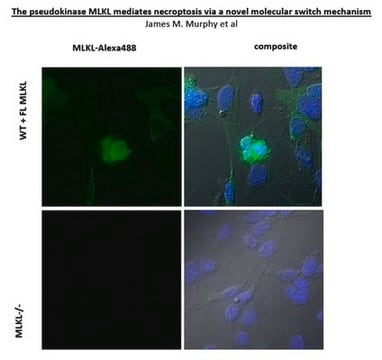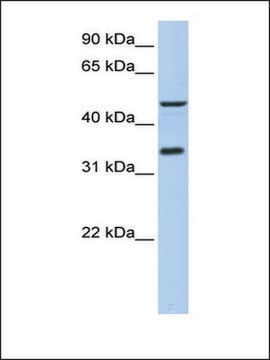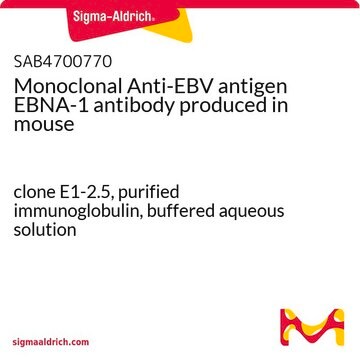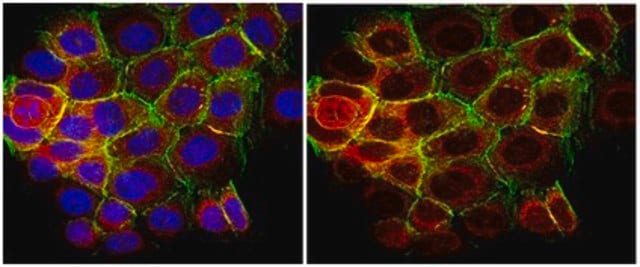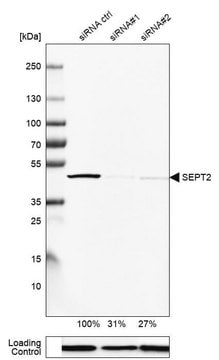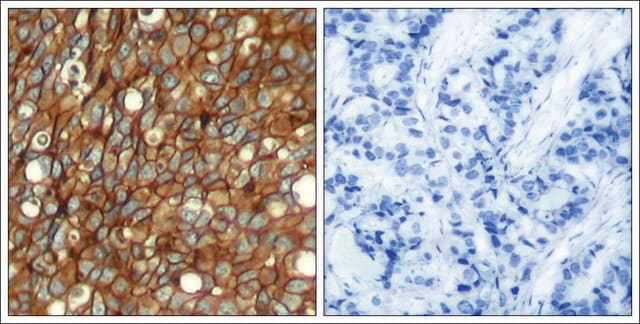MABS2283
Anti-PIP2 Antibody, clone KT10
Sinónimos:
Phosphatidylinositol 4;5-bisphosphate;PtdIns(4;5)P2
About This Item
Productos recomendados
origen biológico
mouse
Nivel de calidad
conjugado
unconjugated
forma del anticuerpo
purified antibody
tipo de anticuerpo
primary antibodies
clon
KT10, monoclonal
mol peso
calculated mol wt 1.042 kDa
purificado por
using Protein A
reactividad de especies
rat, mouse, human
reactividad de especies (predicha por homología)
bovine
envase
antibody small pack of 100 μg
técnicas
ELISA: suitable
flow cytometry: suitable
immunocytochemistry: suitable
inhibition assay: suitable
isotipo
IgG2a
secuencia del epítopo
Unknown
Nº de acceso Protein ID
Nº de acceso UniProt
Condiciones de envío
ambient
modificación del objetivo postraduccional
unmodified
Información sobre el gen
mouse ... Stag1(20842)
Categorías relacionadas
Descripción general
Especificidad
Inmunógeno
Aplicación
Evaluated by Immunocytochemistry in K562 cells.
Immunocytochemistry Analysis: A 1:100 dilution of this antibody detected PI(4,5)P2 (PIP2) in K562 cells.
Tested Applications
ELISA Analysis: A representative lot detected PIP2 in ELISA applications (Fukami, K. et al. (1988). Proc Natl Acad Sci USA. 85(23): 9057-61).
Immunocytochemistry Analysis: A representative lot detected PIP2 in Immunocytochemistry applications (Yoneda, A., et al. (2020). Biochem Biophys Res Commun. 527(4): 1050-1056).
Flow Cytometry Analysis: Analysis: A representative lot detected PIP2 in Flow Cytometry applications (Yoneda, A., et al. (2020). Biochem Biophys Res Commun. 527(4): 1050-1056).
Inhibition Assay: A representative lot of this antibody inhibited intracellular breakdown of PIP2 and also blocked the proliferation of Src- and erbB-transformed cells. (Fukami, K. et al. (1988). Proc Natl Acad Sci USA. 85(23): 9057-61).
Note: Actual optimal working dilutions must be determined by end user as specimens, and experimental conditions may vary with the end user
Forma física
Almacenamiento y estabilidad
Otras notas
Cláusula de descargo de responsabilidad
Not finding the right product?
Try our Herramienta de selección de productos.
Código de clase de almacenamiento
12 - Non Combustible Liquids
Clase de riesgo para el agua (WGK)
WGK 1
Certificados de análisis (COA)
Busque Certificados de análisis (COA) introduciendo el número de lote del producto. Los números de lote se encuentran en la etiqueta del producto después de las palabras «Lot» o «Batch»
¿Ya tiene este producto?
Encuentre la documentación para los productos que ha comprado recientemente en la Biblioteca de documentos.
Nuestro equipo de científicos tiene experiencia en todas las áreas de investigación: Ciencias de la vida, Ciencia de los materiales, Síntesis química, Cromatografía, Analítica y muchas otras.
Póngase en contacto con el Servicio técnico